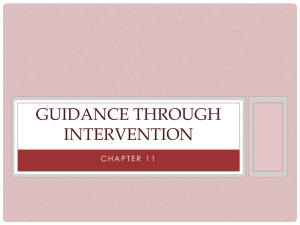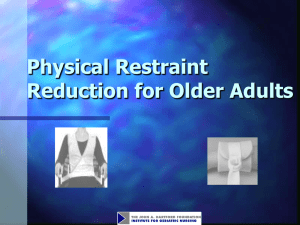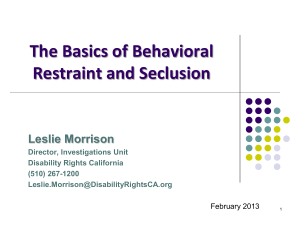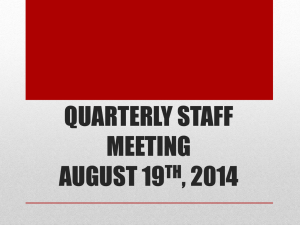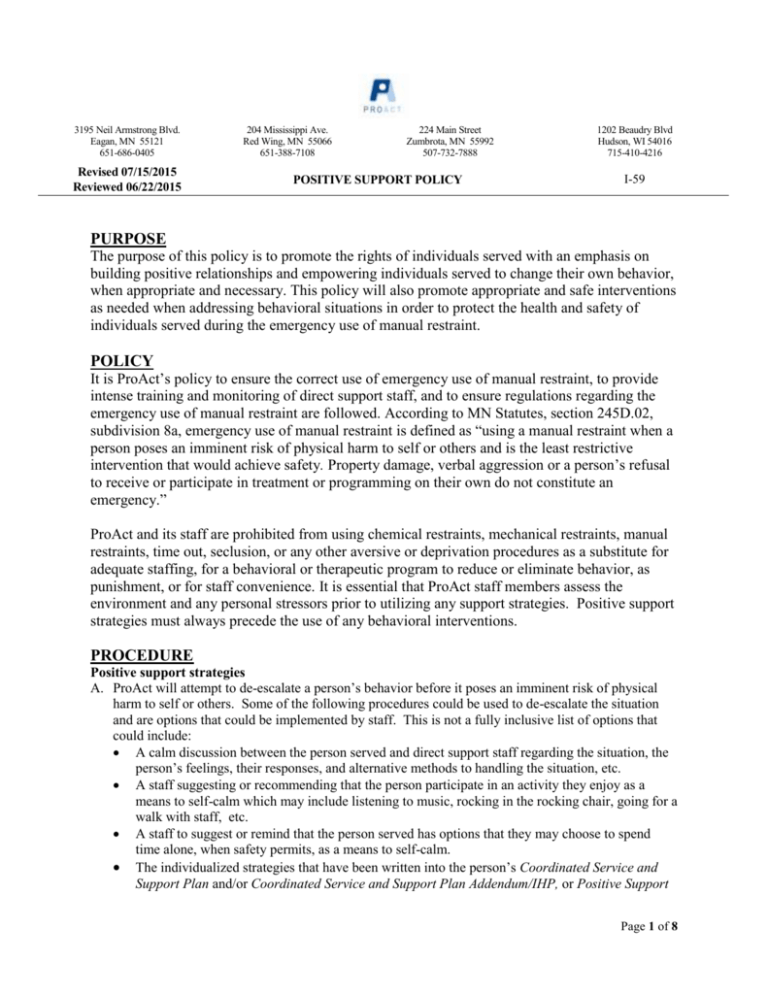
3195 Neil Armstrong Blvd.
Eagan, MN 55121
651-686-0405
Revised 07/15/2015
Reviewed 06/22/2015
204 Mississippi Ave.
Red Wing, MN 55066
651-388-7108
224 Main Street
Zumbrota, MN 55992
507-732-7888
POSITIVE SUPPORT POLICY
1202 Beaudry Blvd
Hudson, WI 54016
715-410-4216
I-59
PURPOSE
The purpose of this policy is to promote the rights of individuals served with an emphasis on
building positive relationships and empowering individuals served to change their own behavior,
when appropriate and necessary. This policy will also promote appropriate and safe interventions
as needed when addressing behavioral situations in order to protect the health and safety of
individuals served during the emergency use of manual restraint.
POLICY
It is ProAct’s policy to ensure the correct use of emergency use of manual restraint, to provide
intense training and monitoring of direct support staff, and to ensure regulations regarding the
emergency use of manual restraint are followed. According to MN Statutes, section 245D.02,
subdivision 8a, emergency use of manual restraint is defined as “using a manual restraint when a
person poses an imminent risk of physical harm to self or others and is the least restrictive
intervention that would achieve safety. Property damage, verbal aggression or a person’s refusal
to receive or participate in treatment or programming on their own do not constitute an
emergency.”
ProAct and its staff are prohibited from using chemical restraints, mechanical restraints, manual
restraints, time out, seclusion, or any other aversive or deprivation procedures as a substitute for
adequate staffing, for a behavioral or therapeutic program to reduce or eliminate behavior, as
punishment, or for staff convenience. It is essential that ProAct staff members assess the
environment and any personal stressors prior to utilizing any support strategies. Positive support
strategies must always precede the use of any behavioral interventions.
PROCEDURE
Positive support strategies
A. ProAct will attempt to de-escalate a person’s behavior before it poses an imminent risk of physical
harm to self or others. Some of the following procedures could be used to de-escalate the situation
and are options that could be implemented by staff. This is not a fully inclusive list of options that
could include:
A calm discussion between the person served and direct support staff regarding the situation, the
person’s feelings, their responses, and alternative methods to handling the situation, etc.
A staff suggesting or recommending that the person participate in an activity they enjoy as a
means to self-calm which may include listening to music, rocking in the rocking chair, going for a
walk with staff, etc.
A staff to suggest or remind that the person served has options that they may choose to spend
time alone, when safety permits, as a means to self-calm.
The individualized strategies that have been written into the person’s Coordinated Service and
Support Plan and/or Coordinated Service and Support Plan Addendum/IHP, or Positive Support
Page 1 of 8
Revised 07/15/2015
POSITIVE SUPPORT POLICY
I-59
Transition Plan.
The implementation of instructional techniques and intervention procedures that are listed as
“permitted actions and procedures” as defined in Letter B of this Positive support strategies
section.
ProAct- specific techniques:
Ignore the negative behavior if possible.
Provide alternative activities for the group that the person may participate in when ready like having the
group go to a different room for exercise, game, etc.
Offer participation in another class or activity
A combination of any of the above.
B. Permitted actions and procedures include the use of instructional techniques and intervention
procedures used on an intermittent or continuous basis. If used on a continuous basis, it must be
addressed in the person’s Coordinated Service and Support Plan Addendum/IHP. These actions
include:
Physical contact or instructional techniques that are the least restrictive alternative possible to
meet the needs of the person and may be used to:
Calm or comfort a person by holding that person with no resistance from that person.
Protect a person known to be at risk or injury due to frequent falls as a result of a medical
condition.
Facilitate the person’s completion of a task or response when the person does not resist or the
person’s resistance is minimal in intensity or duration.
Briefly block or redirect a person’s limbs or body without holding the person or limiting the
person’s movement to interrupt the person’s behavior that may result in injury to self or others
with less than 60 seconds of physical contact by staff.
Redirect a person’s behavior when the behavior does not pose a serious threat to the person or
others and the behavior is effectively redirected with less than 60 seconds of physical contact by
staff.
C. Restraint may be used as an intervention procedure to:
Allow a licensed health care professional to safely conduct a medical examination or to provide
medical treatment ordered by a licensed health care professional to a person necessary to promote
healing or recovery from an acute (short-term) medical condition.
Assist in the safe evacuation or redirection of a person in the event of an emergency and the
person is at imminent risk of harm. This use of manual restraint allowed here must comply with
the restrictions stated in the section of this policy Emergency use of manual restraint, Letter B.
Position a person with physical disabilities in a manner specified in their Coordinated Service and
Support Plan Addendum/IHP. Any use of manual restraint allowed in this paragraph must comply
with the restrictions stated in the section of this policy Emergency Use of Manual Restraint,
Letter C.
Use of adaptive aids or equipment, orthotic devices, or other medical equipment ordered by a licensed
health professional to treat a diagnosed medical condition do not in and of themselves constitute the use
of mechanical restraint.
Positive Support Transition Plans
ProAct must and will develop a Positive Support Transition Plan on forms provided by the Department of
Human Services and in the manner directed for a person served who requires intervention in order to
maintain safety when it is known that the person’s behavior poses an immediate risk of physical harm to
self or others. This Positive Support Transition Plan will phase out any existing plans for the emergency
Page 2 of 8
Revised 07/15/2015
POSITIVE SUPPORT POLICY
I-59
use or programmatic use of restrictive interventions prohibited under MN Statutes, chapter 245D.
Emergency use of manual restraint
A. If the positive support strategies were not effective in de-escalating or eliminating the person’s
behavior, emergency use of manual restraint may be necessary. To use emergency use of manual
restraint, the following conditions must be met:
Immediate intervention must be needed to protect the person or others from imminent risk of
physical harm.
The type of manual restraint used must be the least restrictive intervention to eliminate the
immediate risk of harm and effectively achieve safety.
The manual restraint must end when the threat of harm ends.
B. The following conditions, on their own, are not conditions for emergency use of manual restraint:
The person is engaging in property destruction that does not cause imminent risk of physical
harm.
The person is engaging in verbal aggression with staff or others.
A person’s refusal to receive or participate in treatment of programming.
C. Emergency use of manual restraint procedures must not:
Be implemented with a child in a manner that constitutes sexual abuse, neglect, physical abuse, or
mental injury as defined in MN Statutes, section 626.556, subdivision 2.
Be implemented with an adult in a manner that constitutes abuse or neglect as defined in MN
Statutes, section 626.5572, subdivisions 2 and 17.
Be implemented in a manner that violates a person’s rights and protections identified in MN
Statutes, section 245D.04.
Restrict a person’s normal access to a nutritious diet, drinking water, adequate ventilation,
necessary medical care, ordinary hygiene facilities, normal sleeping conditions, or necessary
clothing, or to any protection required by state licensing standards and federal regulations
governing the program.
Deny the person visitation or ordinary contact with legal counsel, a legal representative, or next
of kin.
Be used as a substitute for adequate staffing, for the convenience of staff, as punishment, or as a
consequence if the person refuses to participate in the treatment of services provided by ProAct.
Use prone restraint (that places a person in a face-down position).
Apply back or chest pressure while a person is in the prone or supine (face-up) position.
Be implemented in a manner that is contraindicated for any of ther person’s known medical or
psychological limitations.
ProAct allows certain types of manual restraints which may be used by staff on an emergency basis.
Detailed instructions on the safe and correct implementation of these allowed manual restraint procedures
are included at the end of this policy. These allowed manual restraints include the following:
Physical escort/walking: Stages 1 and 2
Hold hands to restrict from hitting
CPI InterimTechnique
CPI Transport Technique
CPI Team controlled position
If a person’s licensed health care professional or mental health professional has determined that a manual
restraint would be medically or psychologically contraindicated, ProAct will not use a manual restraint to
eliminate the immediate risk of harm and effectively achieve safety. This statement of whether or not a
manual restraint would be medically or psychologically contraindicated will be completed as part of
Page 3 of 8
Revised 07/15/2015
POSITIVE SUPPORT POLICY
I-59
service initial planning.
Person’s guardian may also restrict use of any manual restraint.
Monitoring of emergency use of manual restraint
A. Each single incident of emergency use of manual restraint must be monitored and reported separately.
For this understanding, an incident of emergency use of manual restraint is a single incident when the
following conditions have been met:
After implementing the manual restraint, staff attempt to release the person at the moment staff
believe the person’s conduct no longer poses an imminent risk of physical harm to self or others
and less restrictive strategies can be implemented to maintain safety.
Upon the attempt to release the restraint, the person’s behavior immediately re-escalates and staff
must immediately re-implement the restraint in order to maintain safety.
B. (To be developed) During an emergency use of manual restraint, ProAct will monitor a person’s
health and safety. Staff monitoring the manual restraint procedure will not be the staff implementing
the procedure, when possible. A monitoring form will be completed by the staff person for each
incident of emergency use of manual restraint to ensure:
Only manual restraints allowed according to this policy are implemented.
Manual restraints that have been determined to be contraindicated for a person are not
implemented with that person.
Allowed manual restraints are implemented only by staff trained in their use.
The restraint is being implemented properly as required.
The mental, physical, and emotional condition of the person who is being manually restrained is
being assessed and intervention is provided when necessary to maintain the person’s health and
safety and prevent injury to the person, staff involved, or others involved.
Reporting of emergency use of manual restraint
Reporting of the incident of emergency use of manual restraint will be completed according to the
following process and will contain all required information per MN Statutes, sections 245D.06,
subdivision 1 and 245D.061, subdivision 5.
A. Within 24 hours of the emergency use of manual restraint, ProAct will make a verbal report
regarding the incident to the legal representative or designated emergency contact and case
manager. If other persons served were involved in the incident, ProAct will not disclose any
personally identifiable information about any other person when making the report unless ProAct
has the consent of the person.
B. Within three (3) calendar days of the emergency use of manual restraint, the staff who
implemented the emergency use of manual restraint will report, in writing, to the Designated
Coordinator and/or Designated Manager the following information:
1. The staff and person(s) served who were involved in the incident leading up to the emergency
use of manual restraint.
2. A description of the physical and social environment, including who was present before and
during the incident leading up to the emergency use of manual restraint.
3. A description of what less restrictive alternative measures were attempted to de-escalate the
incident and maintain safety before the manual restraint was implemented. This description
must identify the when, how, and how long the alternative measures were attempted before
the manual restraint was implemented.
4. A description of the mental, physical, and emotional condition of the person who was
restrained, and other persons involved in the incident leading up to, during, and following the
Page 4 of 8
Revised 07/15/2015
POSITIVE SUPPORT POLICY
I-59
manual restraint.
5. Whether there was any injury to the person who was restrained or other persons involved,
including staff, before or as a result of the manual restraint use.
6. Whether there was a debriefing with the staff, and, if not contraindicated, with the person
who was restrained and other persons who were involved in or who witnessed the restraint,
following the incident. The outcome of the debriefing will be clearly documented and if the
debriefing could not occur at the time of the incident, the report will identify whether a
debriefing is planned in the future.
C. Within five (5) working days of the emergency use of manual restraint, the Director of Programs
& Services will complete and document an internal review of each report of emergency use of
manual restraint. The internal review will include an evaluation of whether:
1. The person’s served service and support strategies developed according to MN Statutes,
sections 245D.07 and 245D.071 need to be revised.
2. Related policies and procedures were followed.
3. The policies and procedures were adequate.
4. There is a need for additional staff training.
5. The reported event is similar to past events with the persons, staff, or the services involved.
6. There is a need for corrective action by ProAct to protect the health and safety of the
person(s) served.
D. Based upon the results of the internal review, ProAct will develop, document, and implement a
corrective action plan for the program designed to correct current lapses and prevent future lapses
in performance by the individuals or ProAct, if any. The Director of Programs & Services will
ensure that the corrective action plan, if any, must be implemented within 30 days of the internal
review being completed.
E. Within five (5) working days after the completion of the internal review, the Designated
Coordinator and/or Designated Manager will consult with the person’s expanded support team
following the emergency use of manual restraint. The purpose of this consultation is to:
1. Discuss the incident and to define the antecedent or event that gave rise to the behavior
resulting in the manual restraint and identify the perceived function the behavior served.
2. Determine whether the person’s served Coordinated Service and Support Plan Addendum
needs to be revised to positively and effectively help the person maintain stability and to
reduce or eliminate future occurrences requiring emergency use of manual restraint.
F. Within five (5) working dates of the expanded support team review, the Designated Coordinator
and/or Designated Manager will submit, using the DHS online Behavioral Intervention Reporting
Form (DHS-5148-ENG-1), the following information to the Department of Human Services and
the Office of the Ombudsman for Mental Health and Developmental Disabilities:
1. The report of the emergency use of manual restraint.
2. The internal review and corrective action plan, if any.
3. The written summary of the expanded support team’s discussion and decision.
G. The following written information will be maintained in the person’s service recipient record:
1. The report of an emergency use of manual restraint incident that includes:
a. Reporting requirements by the staff who implemented the restraint
b. The internal review of emergency use of manual restraint and the corrective action plan,
with information about implementation of correction within 30 days, if any
c. The written summary of the expanded support team’s discussion and decision
d. The notifications to the expanded support team, the Department of Human Services, and
Page 5 of 8
Revised 07/15/2015
POSITIVE SUPPORT POLICY
I-59
the MN Office of the Ombudsman for Mental Health and Developmental Disabilities
2. The DHS’s “commissioner approved” monitoring form.
3. The PDF version of the completed and submitted DHS online Behavioral Intervention
Reporting Form (DHS-5148-ENG-1). An email of this PDF version of the Behavioral
Intervention Reporting Form will be sent to the MN-ITS mailbox assigned to the license
holder.
Staff training requirements
ProAct recognizes the importance of having qualified and knowledgeable staff that are
competently trained to uphold the rights of persons served and to protect persons’ health and
safety. All staff will receive orientation and annual training according to MN Statutes, section
245D.09, subdivisions 4 and 5. Orientation training about EUMR and restricted procedures will
occur within the first 60 days of hire and annual training will occur within a period of 12 months.
Crisis Intervention (Crisis Prevention Institute, Inc.) instruction about verbal and physical
intervention will be presented to staff annually in Red Wing and Zumbrota sites.
A. Prior to having unsupervised direct contact with a person served by ProAct or for whom the
staff has not previously provided support, or any time the plans or procedures are revised as
they relate to the staff person’s job functions for the persons served, the staff person must
review and receive instruction on:
1. What constitutes use of restraints, time out, and seclusion including chemical restraints.
2. Staff responsibilities related to the prohibitions of their use according to this policy and
MN Statutes, section 245D.06, subdivision 5.
3. Why such procedures are not effective for reducing or eliminating symptoms or
undesired behavior and why they are not safe.
4. The safe and correct use of the allowed manual restraints on an emergency basis
according to company policy and MN Statutes, section 245D.061.
B. Before staff may implement an emergency use of manual restraint, and in addition to the
training on this policy and procedure and the orientation and annual training requirements,
staff must receive training on emergency use of manual restraints that incorporates the
following topics:
1. Alternatives to manual restraint procedures including techniques to identify events and
environmental factors that may escalate conduct that poses an imminent risk of physical
harm to self or others.
2. De-escalation methods, positive support strategies, and how to avoid power struggles.
3. Simulated experiences of administering and receiving manual restraint procedures
allowed by ProAct on an emergency basis.
4. How to properly identify thresholds for implementing and ceasing restrictive procedures.
5. How to recognize, monitor, and respond to the person’s physical signs of distress
including positional asphyxia.
6. The physiological and psychological impact on the person and the staff when restrictive
procedures are used.
7. The communicative intent of behaviors.
8. Relationship building.
C. Documentation of all orientation and annual staff training along with demonstrated
competencies will be maintained in each staff’s personnel file.
Page 6 of 8
Revised 07/15/2015
I.
POSITIVE SUPPORT POLICY
I-59
DETAILED INSTRUCTIONS ON ALLOWED MANUAL RESTRAINT
PROCEDURES
If an emergency use of manual restraint is needed, staff will attempt to verbally calm the person
down throughout the implemented procedure(s), unless to do so would escalate the person’s
behavior. The least restrictive manual restraint will be used to effectively handle the situation.
Physical escort/walking:
If a person served has escalating behaviors and it is necessary to move the person, staff may
follow stages 1 and 2 of physical escort/walking.
Stage 1: A staff person will walk by the side of the person while remaining slightly behind the
person. Staff will place their hand that is closest to the person, on the person’s forearm, just below
the elbow while applying firm, but gentle pressure. While walking with the person, staff will
remain near to the person so that the placement of the hand on the person’s forearm is effective.
Stage 2: If stage 1 is not effective, staff may use both of their hands to move the person while
walking. Staff will move their hand currently on the person’s forearm to the person’s small of
their back and apply firm, but gentle pressure. Staff’s other arm, that is farthest away from the
person, will reach across and be placed on the person’s forearm, below the elbow, on their
forearm, while applying firm, but gentle pressure. In this position, staff will remain near to the
person while walking with them to another area.
Hand restraint:
If individual is hitting out, doesn’t respond to verbal redirection and is in danger of hurting
themselves or others, staff may hold the person’s hands/wrists along with simple communication
with redirection to calm down or another activity. This may be in a standing or sitting position.
CPI Team Control Position SM
The CPI Team Control Position SM is used to manage individuals who have become dangerous
to themselves or others. Two staff members hold the individual as the auxiliary team member(s)
continually assess the safety of all involved and assist, if needed. During the intervention, staff
members who are holding the individual should:
• Face the same direction as the acting-out person while adjusting, as necessary, to maintain
close body contact with the individual.
• Keep their inside legs in front of the individual.
• Bring the individual’s arms across their bodies, securing them to their hip areas.
• Place the hands closest to the individual’s shoulders in a “C-shape” position to direct the
shoulders forward.
Control Dynamics
1. Reduce upper-body strength by controlling the arms as weapons.
a. Turn palms up. (Wrap arms around body.)
b. Raise arms to be even with or above shoulders.
c. Anchor arm to your body (hip area).
2. Reduce lower-body strength by controlling the back incline.
a. Lower shoulders to be even with or below hips.
3. Reduce mobility by close body contact.
a. Move hips close to individual’s body (hug in).
b. Move individual’s center of gravity forward onto toes.
Page 7 of 8
Revised 07/15/2015
POSITIVE SUPPORT POLICY
I-59
CPI Transport Position SM
The CPI Transport Position SM will assist you in safely moving an individual who is beginning
to regain control. Prior to moving an individual, assist the person into a more upright position and
remove your hand from the individual’s shoulder. Reach under the individual’s arm to grab your
own wrist. This cross-grain grip better secures the individual between staff during transport.
Remove your leg from directly in front of the individual prior to transport while maintaining
close body contact. It is not recommended to transport an individual who is struggling. If
necessary, return to the CPI Team Control Position SM if the individual’s and/or staff’s safety is
at risk.
CPI Interim Control Position SM
The CPI Interim Control Position SM is a temporary control position that allows you to maintain
control of both of the individual’s arms, if necessary, for a short time. Starting from the CPI
Transport Position SM, maintain control of the individual’s arm, but release the “cross-grain
grip.” Use your free arm to reach across and gain control of the opposite arm. If the individual
attempts to strike, use your free arm to block, and safely move away
©2013 Crisis Prevention Institute, Inc. All content contained herein is used with permission of
Crisis Prevention Institute, Inc. All rights reserved.
Page 8 of 8

